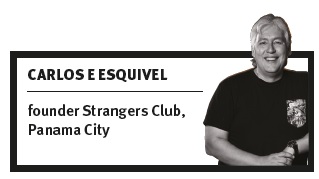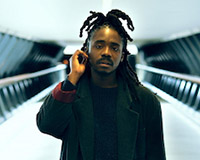Tell us a little about the history of your city’s drinking culture.
Beer has been the beverage of preference due to price, availability and, of course, the hot and humid climate, followed by rum and cola. We produce a local neutral cane distillate called seco, which is easily mixed with fruit juices. This seco started as a farmers’ drink and eventually permeated all the social degrees of the country. Right now there is a growing demand for craft products, the younger generations are drinking local and imported IPA beers as well as crafted cocktails. The older generations still like to have bottle service at a bar. Bottle service is quite popular here due to the low taxation on alcoholic beverages – also it’s convenient when clubs are packed so you don’t have to wait for a server to take care of you. A very popular rum drink is Pintao, which is 2oz rum, 5oz club soda and a splash of cola. Premixed cocktails were always available, however now locals are turning their palates to the real, freshly made cocktail.
When did the city get into cocktails – or is there still a way to go before we can say there is a mainstream cocktail culture?
The serious craft cocktail culture started maybe three or four years ago, and it’s building up. For sure it’s growing but is not at its finest moment as yet. Indeed it is blossoming and catching up at great speed.
Who and what are the pioneer bartenders and bars?
The first ones are always the bravest ones. I will say bartenders such as Pascual Tejada, Carlos Maestracci and Angela Vecchione are the ones who ignited the movement. As pioneer bars I will say Amano, Mula and Strangers Club.
Where do you think the city ranks in terms of bar scenes in Latin America? Is it leading the way or are other cities and scenes more influential?
Because of our location, Panama is the hub of everything and everyone. Definitely we have raised the bar for craft cocktails and hospitality as we’d even been nominated in the top 10 Best New International Bars by Tales of the Cocktail, therefore we are a point of reference. But the bar scenes in Bogota, Lima and Mexico City are ahead of us for now.
Do economic shifts affect cocktail consumption? Do you feel cocktail consumption is at an all-time high?
Our culture is very special when it comes to economic shifts as they don’t affect the drinking trend as much as in other latitudes. However, because of pricing, beer will always be the biggest challenger against authentic craft cocktails, regardless of the situation. People still walk into a cocktail bar and before they order their favourite expression, they will start with a beer or two. The crowd in this city have more drinks per hour than their peers in the US or London. But there is still more work to do before you can say that cocktail consumption is at an all time high here. For sure we are drinking more cocktails than before, but not to the point where you can say we are at an all-time high.
What challenges do the city’s bartenders/owners face?
The biggest challenge for a bar is to keep it interesting for the locals. This is a city with lots of tourists who happen to have great cocktail bars in their countries and have developed a taste for it. However, locals are still debating whether to have a cocktail vs traditional libations (beer, bottle service and rum & cola).
Some still get mad when they walk into a cocktail bar and find out they have a very short list of beers. For now the demographics show that the female crowd has been more receptive than the male one – a good cocktail bar in Panama will always have more women than men with a cocktail in their hands.
What is the best cocktail you’ve had in your home town and who made it?
A Negroni by Ivan Radulovic, from Strangers Club.




